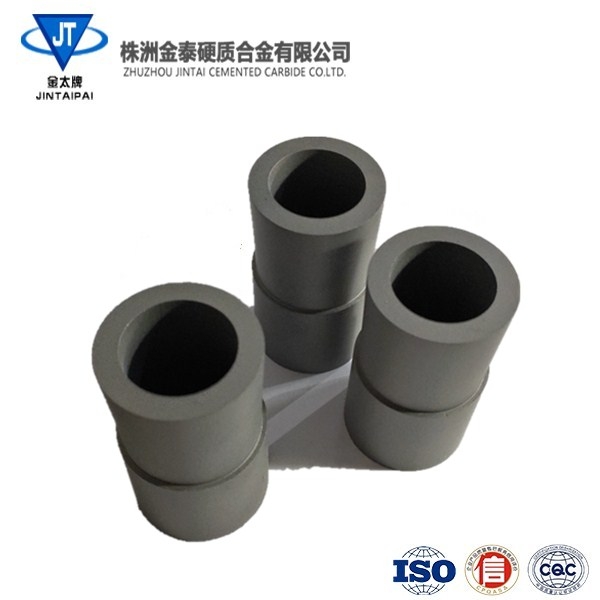<span id="lqo9h"></span>
<nav id="lqo9h"></nav>
<dd id="lqo9h"></dd>
<th id="lqo9h"></th>
<progress id="lqo9h"><track id="lqo9h"></track></progress>
电 话:177 7331 8062
传 真:0731-28828378
地 址:湖南省株洲市荷塘区金山工业园枫丹南路18号
网 址 : www.tsdongzun.com
随着工业技术的不断改良,硬质合金模具应用层面越来越广,市场上的拉丝模具,冲压,成形,冲孔,冲裁以及挤压模具都和它密不可分。硬质合金模具的失效形式归纳起来大致有三种,即磨损、断裂、塑性变形。下面就来介绍失效形式的磨损、断裂、塑性变形:
1、磨损失效
产品在工作时,与成形坯料接触,产生相对运动。由于表面的相对运动,接触表面逐渐失去物质的现象叫磨损。磨损失效可分以下几种:
a. 疲劳磨损
两接触表面相对运动时,在循环应力(机械应力与热应力)的作用下,使表面金属疲劳脱落的现象称为疲劳磨损。
b. 磨蚀磨损
在摩擦过程中,产品表面和周围介质发生了化学或电化学反应,再加上摩擦力的机械作用,引起表面材料脱落的现象叫磨蚀磨损。在硬质合金模具工件(或坯料)相对运动中,磨损往往是以多种形式并存,并相互影响。

c. 气蚀磨损和冲蚀磨损
产品表面的气泡破裂,产生瞬时的冲击和高温,使产品表面形成微小麻点和凹坑的现象叫气蚀磨损。液体和固体微小颗粒反复高速冲击表面,使表面局部材料流失,形成麻点和凹坑的现象叫冲蚀磨损。
2、断裂失效
产品出现大裂纹或分离为两部分和数部分丧失工作能力时,成为断裂失效。断裂可分为塑性断裂和脆性断裂。产品材料多为中、高强度钢,断裂的形式多为脆性断裂。脆性断裂又可分为1次性断裂和疲劳断裂。
3、塑性变形失效
钨钢模具在工作时承受很大的应力,而且不均匀。当产品的某个部位的应力过了当时温度下其材料的屈服限度时,就会以晶格滑移、孪晶、晶界滑移等方式产生塑性变形,改变了几何形状或尺寸,而且不能修补再工作时,叫塑性变形失效。塑性变形的失效形式表现为镦粗、弯曲、形腔胀大、塌陷等。
产品的塑性变形是模具金属材料的屈服过程。是否产生塑性变形,起主理作用的是机械负荷以及模具的室温强度。在高温下工作的模具,是否产生塑性变形,主要取决于产品的工作温度和材料的高温强度。
![]() 地址:湖南省株洲市荷塘区金山工业园枫丹南路18号
地址:湖南省株洲市荷塘区金山工业园枫丹南路18号
![]() 电话: 黄经理 177 7331 8062
电话: 黄经理 177 7331 8062
![]() 邮箱:2433116560@qq.com
邮箱:2433116560@qq.com

